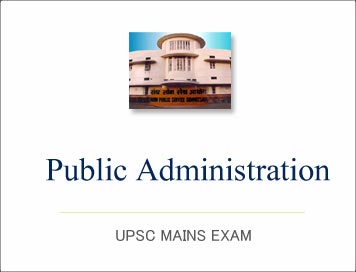Public Administration Papers Topic : Evolution of Indian Administration

Public Administration Papers Topic : Evolution of Indian Administration
- “The Rule of kings depends primarily on written orders...” Why did Kautilya favour Codification of Laws ? (20 marks 2010).
- Comment on the view that despite different contexts, administrative maxims of kautilya’sArthashastra bear considerable similarity with features of Weber’s ideal bureaucratic model. (20 marks 2009)
- “Kautilya was not only the foremost politico-administrative thinker of ancient India but he was an advocate and preacher of moral values too.” Comment. (20 marks 2007)
- "Bureaucracy developed by the British stifled the village self-rule." Comment. (20 marks 2009)
- "The main features of British governmental and administrative system continue to influence the present Administrative System." Comment. (20 marks 2004)
- "Though India emerged as a sovereign state after Independence, the administrative system remained the same as it was during the British period." Comment. (20 marks 2003)
- “The Arthashastra is India’s Oldest complete text on public administration.” Comment (20 marks 2003)
- "The Mughal Administrative System was military rule by nature and a form of centralised despotism." Analyse. (12 marks 2012)
- 'Some features of Mughal Administration, in essence, do exist in Indian Administration.' Elaborate. (20 marks 2008)
- "The Mughal Administrative System was a military rule by nature and was centralized despotism." Comment. (20 marks 2005)
- It is said that the British made a significant contribution towards modernising the Indian Administrative System on a 'rational - legal' basis. Justify the assessment with reference to the period from 1830 to 1865. (30 marks 2010)
- ‘The Arthashastra is a book of Political realism.’ Elaborate (15 marks 2012)
- “The Charter Act of 1853 marked the beginning of the parliamentary system in India.” Explain (10 marks 2013)
- “Ethics in public services has been the central concern of Kautilya’s Arthashastra.” Critically examine the statement. (10 marks 2014)
- “Indian administration is said to be characterized by its three features viz. W eberian structures, Kautilyan practice and Gandhian rhetoric.” Examine the statement.(20 marks 2014)
- “The Regulating Act of 1773 not only introduced value in administration but also laid the foundation on centralized administration in India.” Explain (10 marks 2015)
- “In contemporary times, Kautilya’s Arthashstra is relevant more in the field of international relations than in economic affairs.” Analyse the statement(20 marks 2016)
- “A significant legacy of the Mughal rule in India is a well-organized revenue administration at the State and District Levels.” Comment.(15 marks 2016)
- “Indianisation of Public Services is a slow but steady process.” Explain(20 marks 2017)
- “A government next-door is the government that matters most for the people.” Discuss the statement with special reference to the values of the local government. (10 marks 2018)
- In the text of Arthashastra, ‘the state is neither a police State nor merely a tax gathering State’. Comment. (10 Marks 2019)
- Mughal administration incorporated a combination of indian and extra-Indian clements. Discuss (10 Marks 2020)
- The public services in India are an evolution of the British Raj. Trace the Indianization of the services.(10 Marks 2020)

